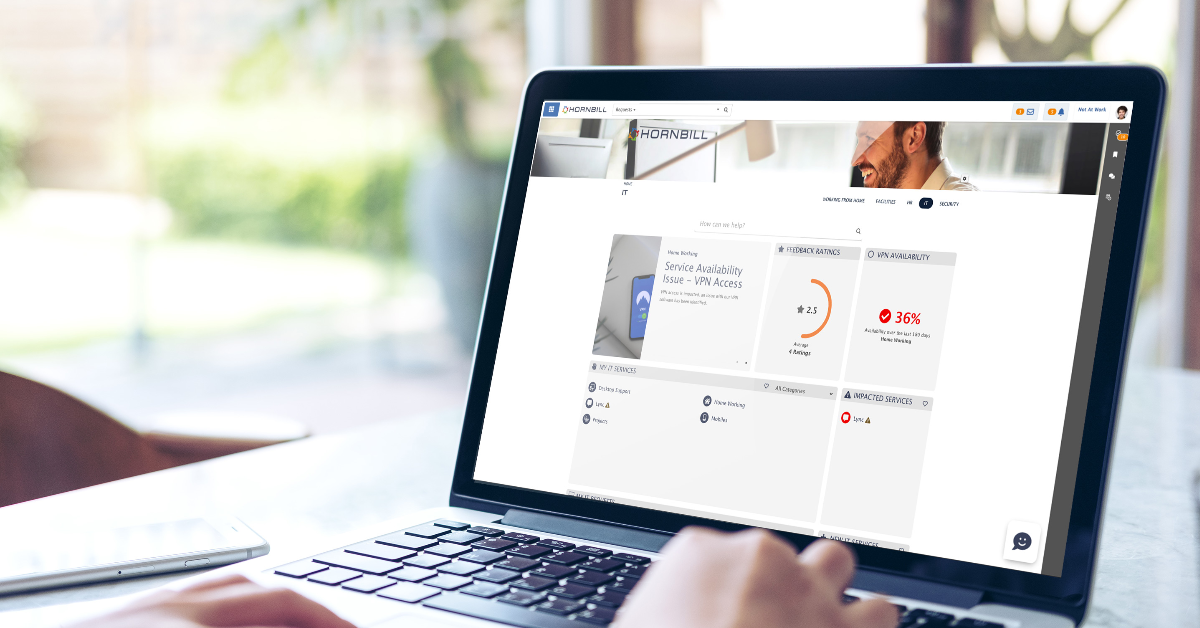5 Essential Considerations when Implementing Self-Service

The impact of COVID-19 has fundamentally shifted the way organizations and businesses operates and investing in an effective self-service channel
will be essential. When implemented correctly, self service offers a fantastic opportunity to increase efficiencies and cost savings while improving the service experience for employees. Here are five key things to consider to successfully deliver self-service.
- The Role of Communication
With modern Service Management tools, setting up the technical side of self-service is the easy part. Persuading your users/customers to change their behavior however can pose a challenge. By focusing on the user experience and communicating the benefits of self-service you can increase adoption rates significantly.
Once you have launched self-service, ask the Service desk to heavily promote its use. Encouraging feedback from customers is vital to ensure that they feel their perspective is valued and will be more likely to use the self-service portal.
- The Importance of Design and Branding
Your self-service portal should be designed in accordance your corporate style and branding. Important information should be presented in a clean, easily digestible format, so that customers will want to consume it. A common mistake made at this stage is assuming that you know what information your users will want to see, or which capabilities of the self-service portal they want to use. Iterative and adaptive development of the portal will help you avoid this pitfall. If your goal is to deliver the best possible user experience, adoption rates will rise significantly. Get this wrong and don’t be surprised when it turns into an uphill battle.
- Ensure You Commit to the Right Investment Level
You cannot approach self-service with a lackluster, lukewarm attitude. Without sufficient focus, funding, and resources, adoption will stagnate, and the benefits of self-service will not be realized. With cost-containment and efficiency high on Board agendas, IT teams will be expected to deliver digital solutions that allow for greater levels of self-sufficiency. The ability to encourage users to help themselves, deflect calls and prioritize work according to business impact will be critical.
- Design in Flexibility and Ease of Adaptation
By presenting the right knowledge, offering guidance, and asking the right questions, your self-service portal can deliver a tailored experience for your users, making it the easiest way for employees to interact with the Service Delivery team.
Enterprise Service Management (ESM) is a powerful tool in your arsenal and is typically supported by modern Service Management tools. It allows services to be split across different domains, so while services are still restricted to each domain, employees benefit from having a single place to go to engage with different teams.
This way users have access to a clean interface and teams are able to publish their services, catalog items, request types, and personalize the service experience. To achieve this, the portal needs to be simple to configure. No/low code solutions are well suited to this, enabling complex services to be designed, integrated, and automated by non-technical staff.
- Embrace the Art of the Possible
One of IT’s greatest strengths is its familiarity with constant cycles of evolution and iteration to create and improve processes. What your organization needs today could be vastly different to tomorrow.
Bots are often highlighted as the next leap forward, however, to be truly effective they require large data sets to power the algorithms, an effective knowledge base, and a comprehensive understanding of the customer journey. When correctly implemented and combined with automation, self-service will deliver much better results. Start with your services and your supporting processes will make a lot more sense.
To find out more read our latest briefing paper on self service automation.


